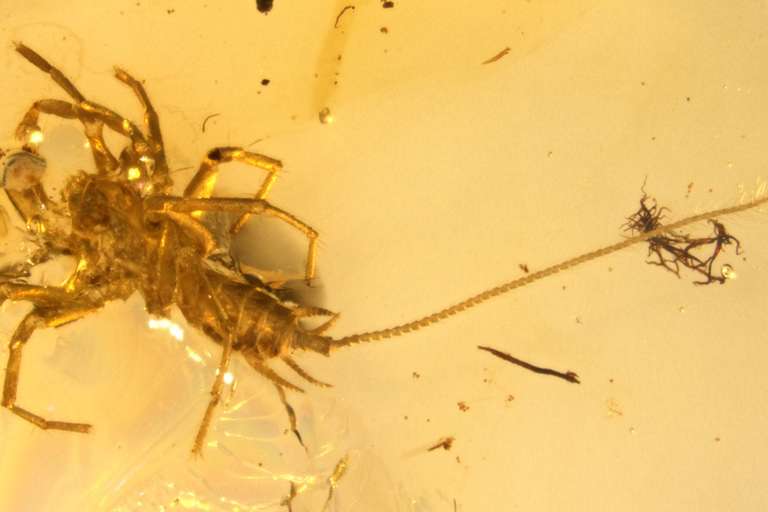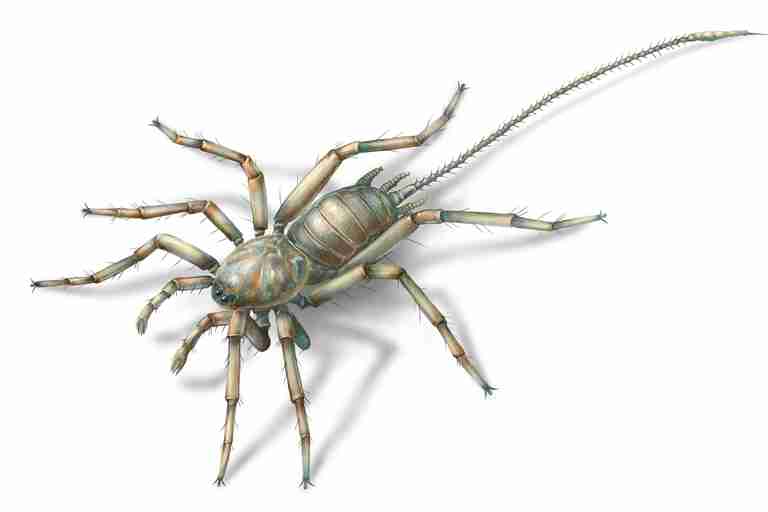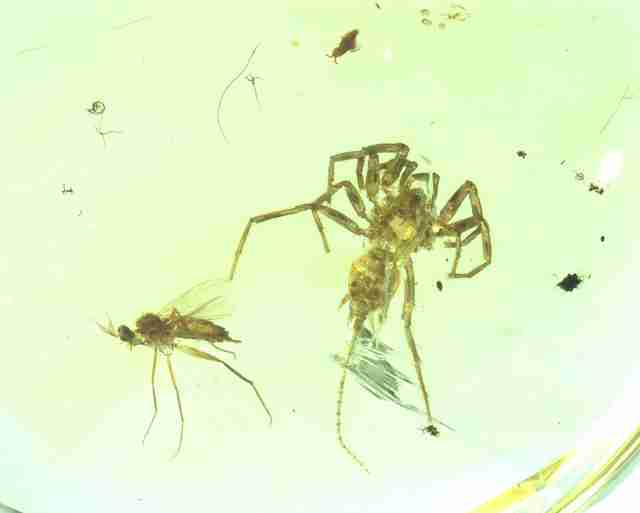 |
| The arachnid C. yingi preserved in amber, with its tail visible |
The creature had fangs, 8 legs, and a long tail that was at least twice the size of the rest of its body.
The specimen and another piece of fossil-containing amber were acquired for the academy's Nanjing Institute of Geology and Paleontology. Word spread among academics about the bizarre find, and Bo Wang, another professor at the academy, obtained two more similar pieces of fossil-containing amber.
Analysis of the four fossils resulted in a scientific rarity. Two independent research teams have simultaneously announced the discovery of a new species, a 100-million-year old arachnid, which has been named Chimerarachne yingi, aka "Monster Spider." Both papers are published in the journal Nature Ecology & Evolution.
"The most interesting feature of C. yingi is that it has both a tail and spinnerets," Wang told Seeker. "It is from a very primitive group, and their relatives were present before 250 million years ago."
He felt extremely surprised, he said, “because I never imagined that we could find this key fossil from the Cretaceous, only 100 million years ago."
 |
| Close-up of one of the C. yingi specimens |
"Maybe the tail originally had a sensory function," Wang said, "but when spiders changed to lifestyles like being sit-and-wait predators, or having webs, the tail was no longer really needed and became lost."
Another early feature of spiders was a segmented abdomen. Most species lost the segmentation over evolutionary time.
 |
| Reconstruction of C. yingi |
Spiders began spinning silk much earlier than Monster Spider's lifetime. The world's oldest known spider dates to about 315 million years ago. Spiders might have first used silk to wrap their eggs, or to line their constructed tunnels, the researchers theorize.
The earliest known spider preserved in amber comes from what is now Lebanon and dates to approximately 130 million years ago. C. yingi, however, hailed from what is now northern Myanmar, formerly known as Burma, an area famous for its amber.
"Spiders are very common in amber," Wang said. "Considering the huge amount of Burmese amber, there are only 4 specimens of C. yingi, so C. yingi is extremely rare."
Wang and his team believe that the new species should be classified in the order Araneae, making it a true spider. Wang explained that C. yingi exhibits two key features only present in Araneae: a male pedipalp (appendage) modified for sperm transfer, and well-defined spinnerets.
 |
| Ecological reconstruction of C. yingi |
Huang explained that the order refers to close relatives of spiders that are now extinct.
If additional evidence in the future proves their conclusion to be correct, then the fossil record of Uraraneida has just been extended some 170 million years toward the present. This, in turn, would mean that these spider-like arachnids and actual spiders co-existed for a large fraction of their evolutionary history.
Additionally, if C. yingi falls within Uraraneida, then organs for spinning silk and the modified male pedipalps are not unique to spiders.
Future research could solve the mystery, and reveal more about Monster Spider's behavior.
Clues could be the other inclusions within the pieces of amber, which Huang's colleague Gustavo Hormiga from the George Washington University described for Seeker.
 |
| One of the C. yingi specimens showing some of the amber inclusions |
Read more at Seeker
No comments:
Post a Comment